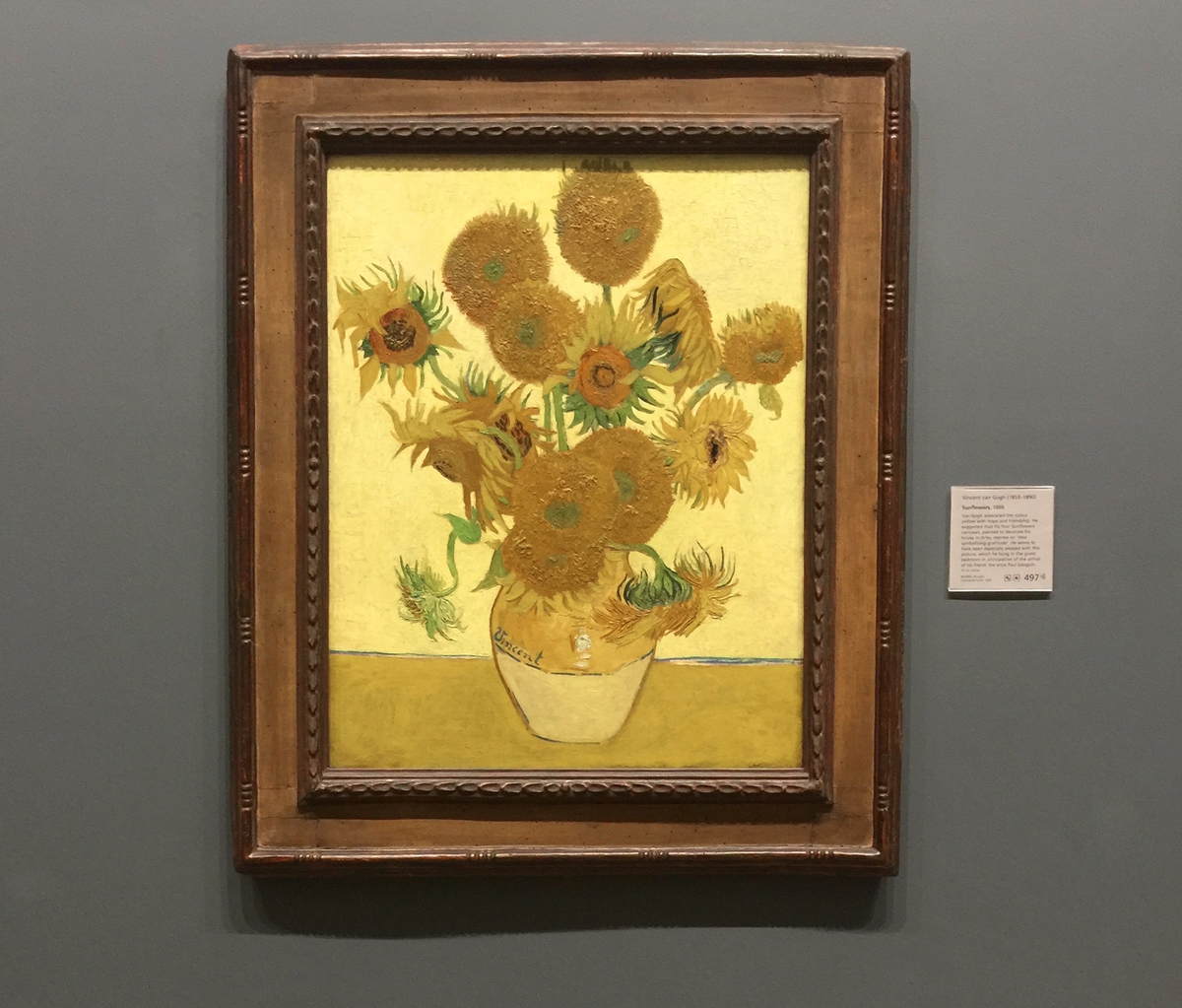When the National Gallery published A Record of Ten Years 1917-1927, it illustrated 102 acquisitions. These included quite a number by artists who have long been forgotten—and banished to the stores. But, from today’s perspective, there is one astonishing omission: Van Gogh’s Sunflowers (August 1888), bought in 1924.
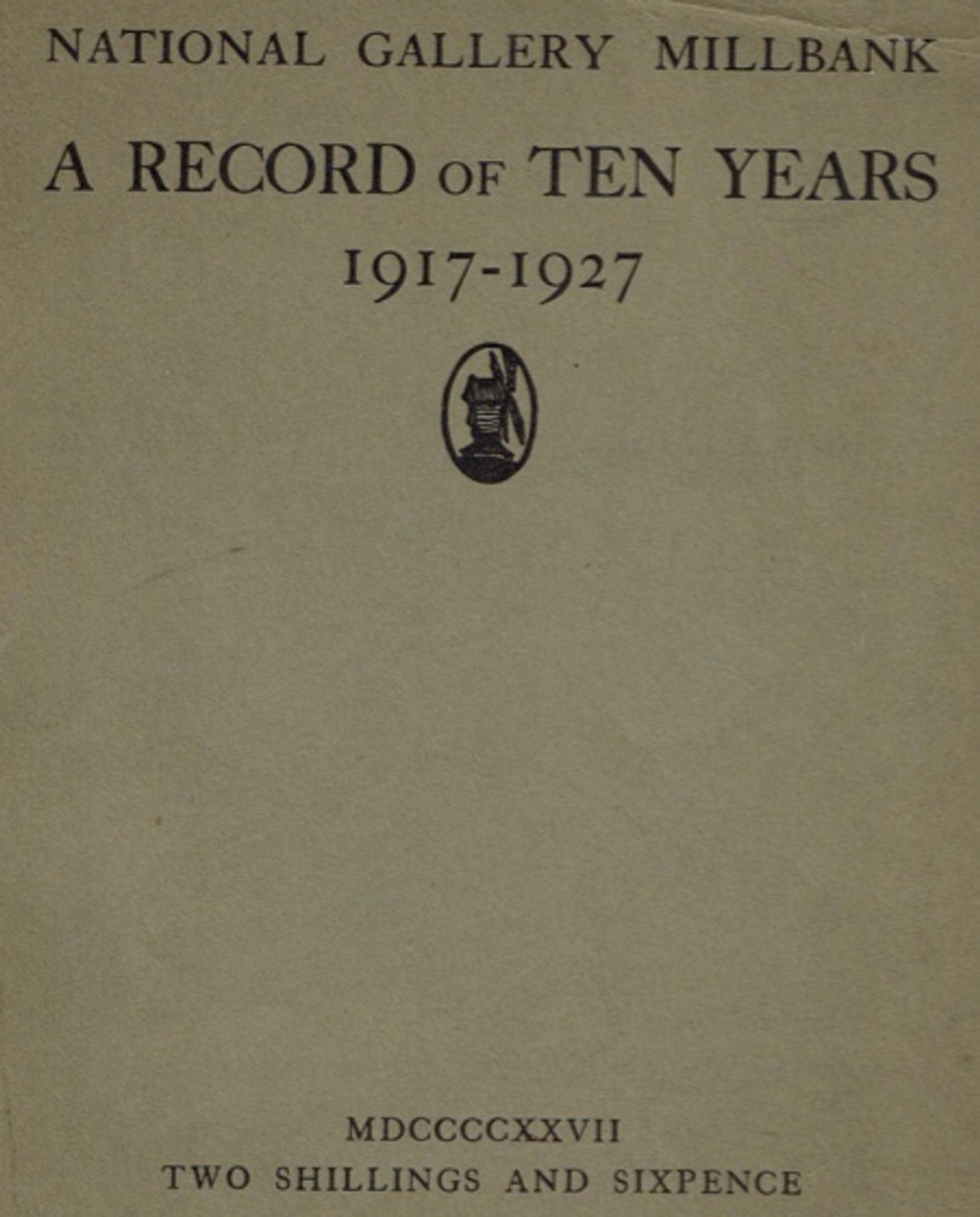
Cover of A Record of Ten Years 1917-1927, published by the National Gallery Millbank, 1927
To be fair to the unnamed editor of the 110-page book, one very fine Van Gogh was illustrated: A Wheatfield with Cypresses (September 1889). The publication covered acquisitions for the Millbank gallery, then part of the National Gallery, but which later became independent as the Tate. The Sunflowers was shown at Millbank (the building which is now Tate Britain) until 1961, when it was moved to the National Gallery in Trafalgar Square.
So how did Van Gogh’s greatest version of his sunflower still lifes end up in London? In December 1923 it had been included in the artist’s first one-person show in London, held at the Leicester Galleries.
At this point the National Gallery tried to buy the Sunflowers. Jo Bonger, Vincent’s sister-in-law, initially refused to part with it, but eventually relented “for the sake of Vincent’s glory”. In March 1924 Sunflowers was bought for the Millbank gallery for £1,304, generously funded by Samuel Courtauld.
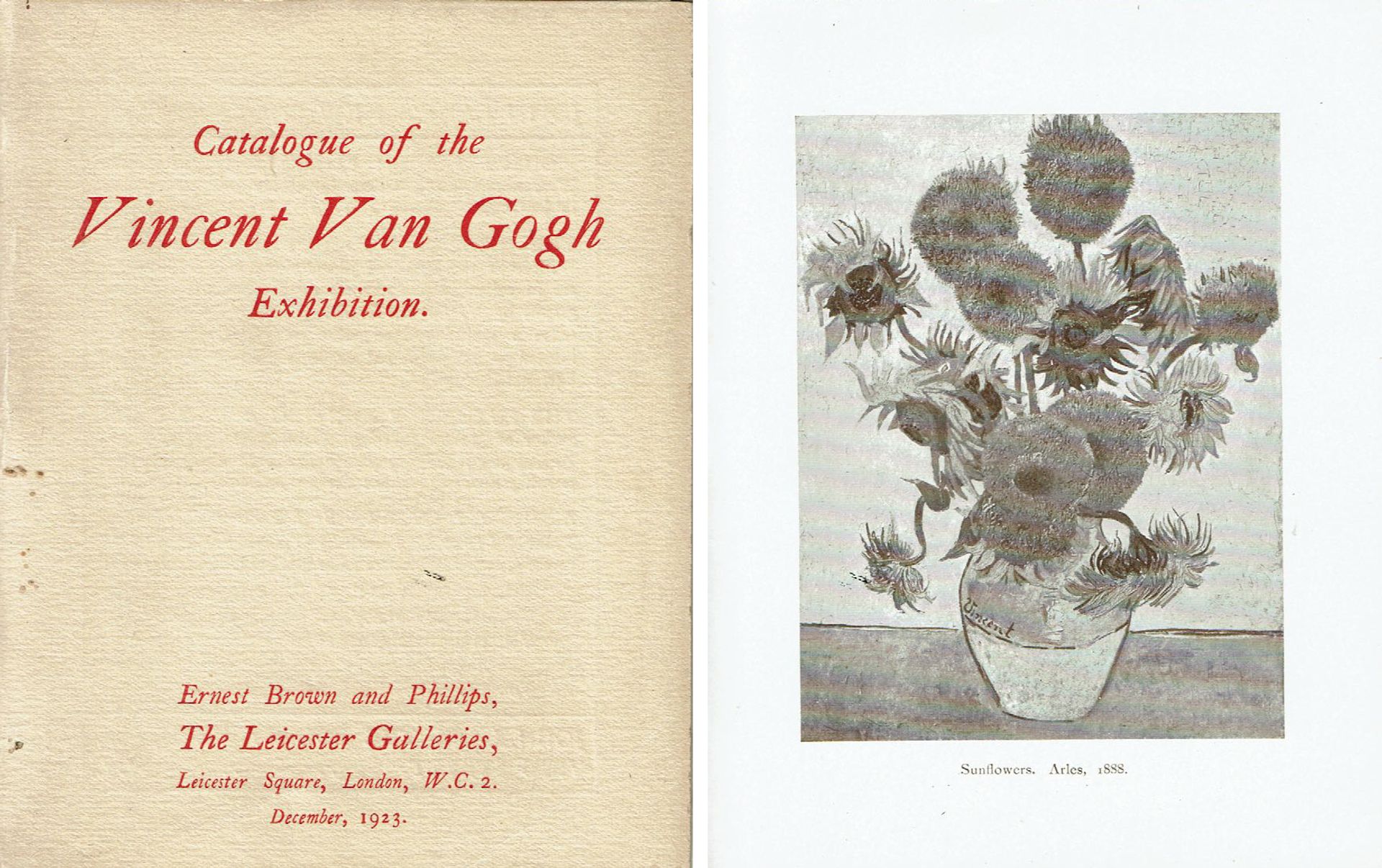
Cover of the Catalogue of the Vincent van Gogh Exhibition, Leicester Galleries, London, December 1923 with the illustration of Sunflowers
By this time Van Gogh was beginning to become accepted, but when his work had been exhibited in London in 1910 at the first Post-Impressionist exhibition it had been greeted with howls of protest.
The Morning Post’s critic Robert Ross wrote that “the emotions of these painters (one of whom, Van Gogh, was a lunatic) are of no interest except to the student of pathology and the specialist in abnormality”. The Graphic ran their account under the headline “Is it art?” H.M. Bateman drew one of his inimitable cartoons in the Bystander, which included a parody of a Van Gogh self-portrait “with a misplaced ear”.
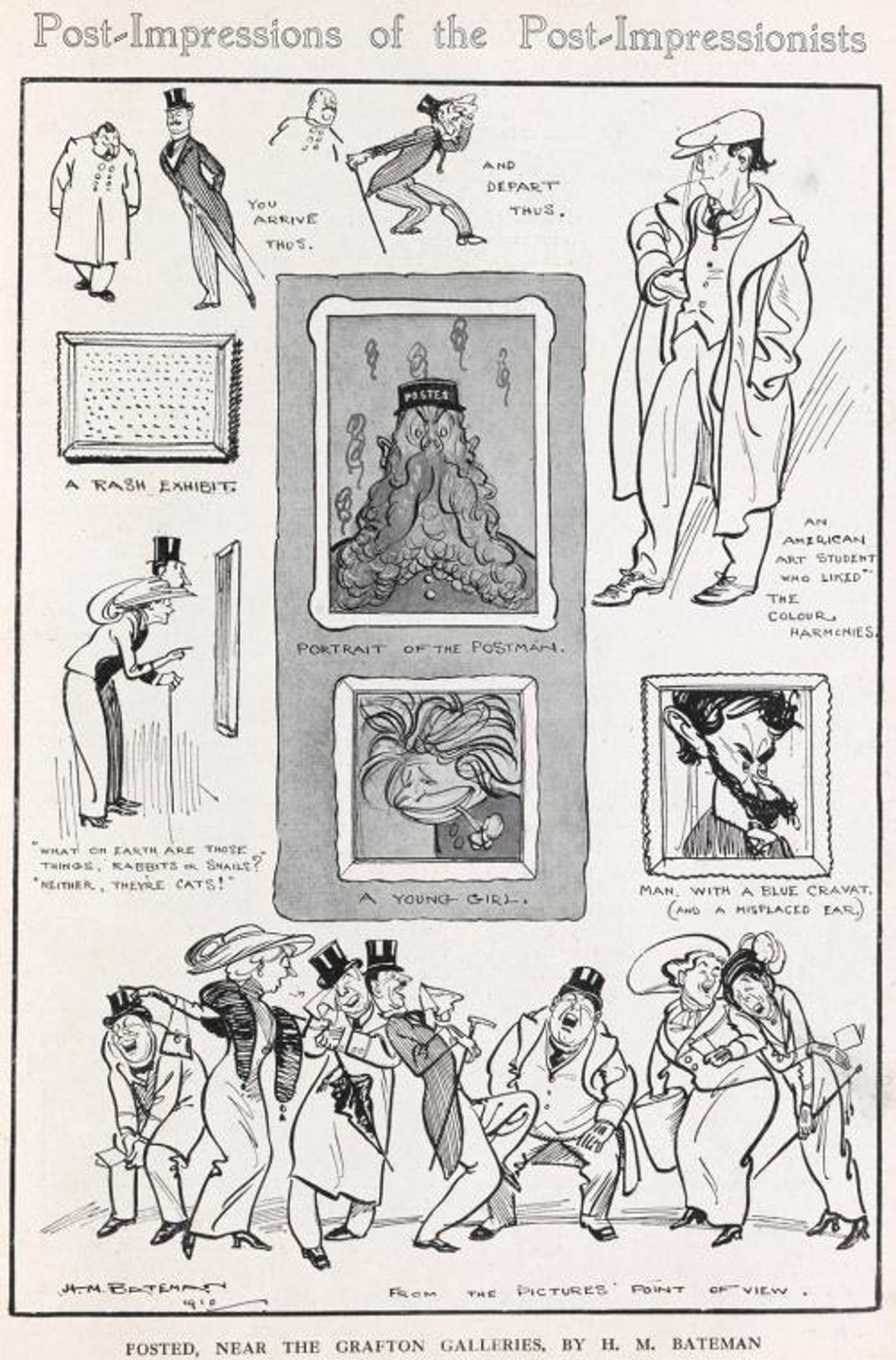
H.M. Bateman’s “Post-Impressions of the Post-Impressionists”, Bystander, 23 November 1910
Now, of course, Sunflowers has become the National Gallery’s biggest attraction, honoured with its own table in the shop.
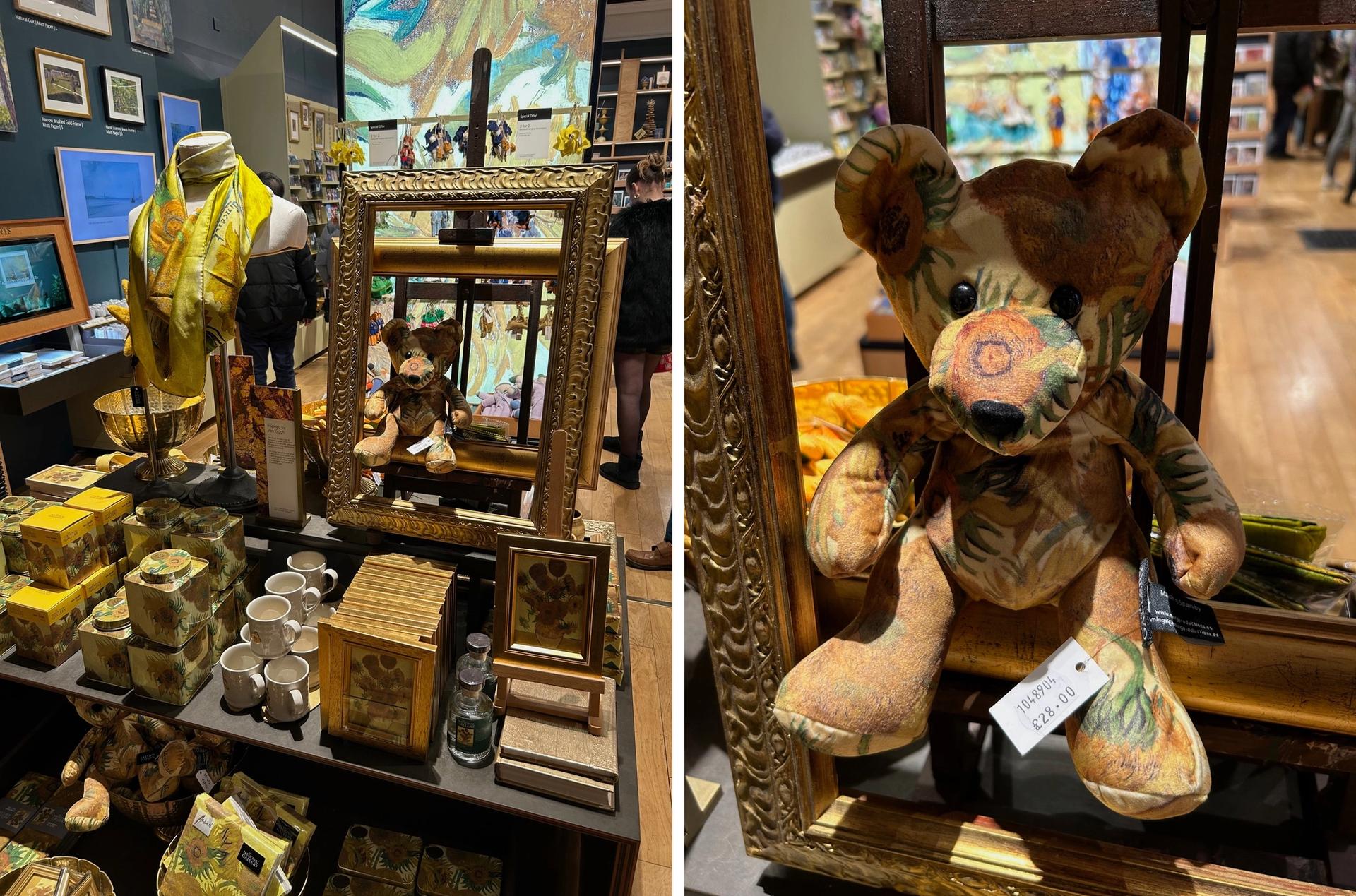
Sunflowers pulls in shoppers at the National Gallery Credit: The Art Newspaper
Postcards may have gone out of fashion, but even today Sunflowers normally remains the bestseller. At a rough guess the National Gallery must have sold well over a million cards of the picture since it came to London, bringing in a very substantial profit. Its acquisition certainly represented money well spent. The painting’s present financial valuation for insurance purposes (when travelling) remains top secret, but it would certainly be several hundred million pounds.
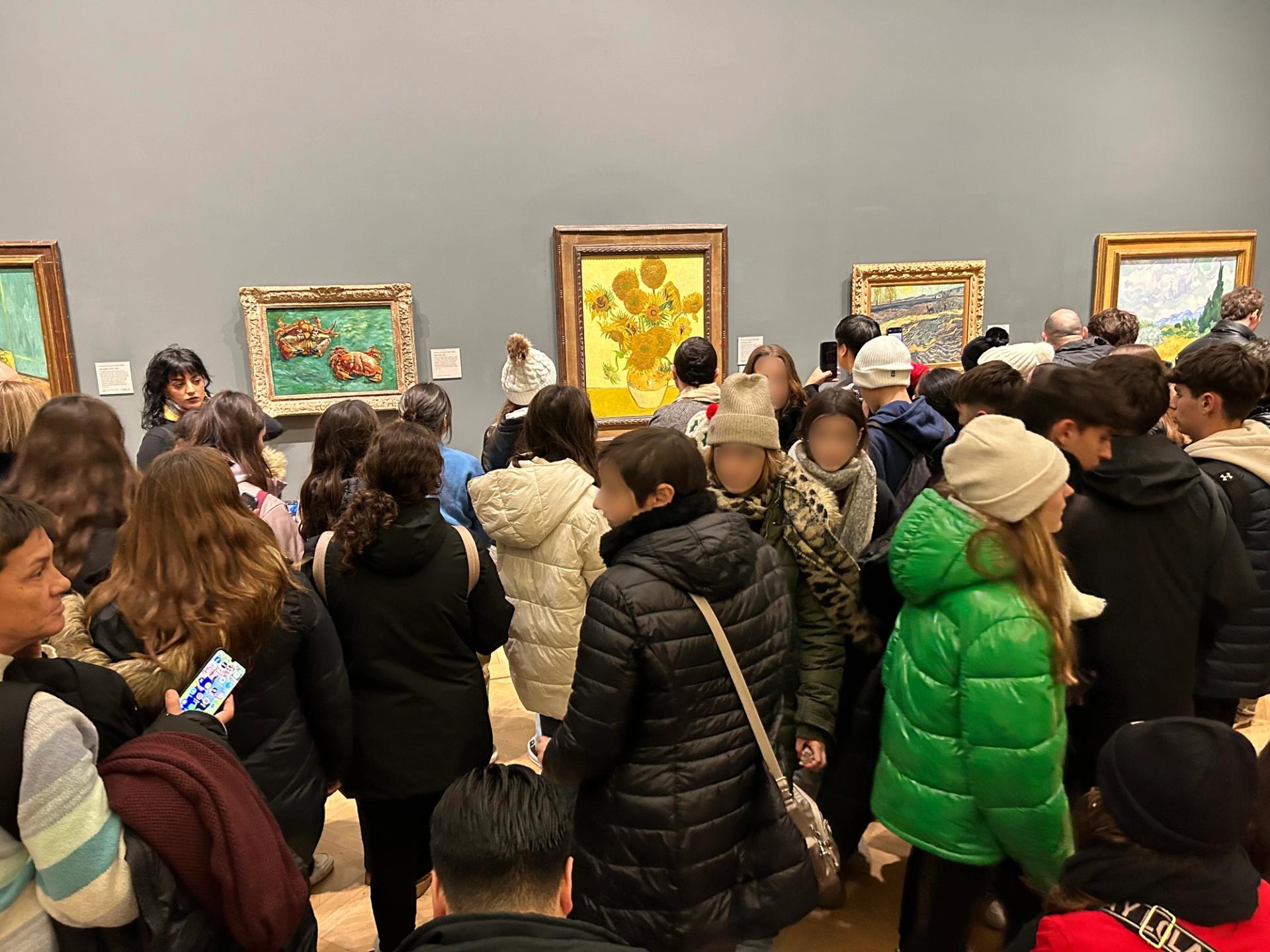
Visitors at the National Gallery
Credit: The Art Newspaper
I used to say that the floor in front of the Sunflowers gets scuffed more than that by any other National Gallery picture. Sadly, now there is more evidence on the floor of the painting’s celebrity. On 14 October 2022 Sunflowers was the victim of a protest by climate activists who threw tomato soup at it. Fortunately glass protected the artwork, although the 17th-century frame suffered minor damage. The frame was promptly restored, but there still remain signs of marks on the wooden floor immediately below the picture.
Next year the Sunflowers is to be moved a few rooms along to become a centrepiece in Van Gogh: Poets and Lovers (14 September 2024–19 January 2025). The exhibition, which will focus on the artist’s period in Provence, is to be the highlight of the gallery’s celebrations of its 200th anniversary.
Chris Riopelle, the show’s co-curator, points out that the Sunflowers was bought in the year of the gallery’s first centenary, in 1924: “Even if three years later it wasn’t considered a particularly notable acquisition, not even worth illustrating, as we approach our bicentenary it reigns as arguably our key modern picture.”
Although controversial in 1924, a century later the £1,304 paid for the Sunflowers clearly represents an astonishing bargain.
Other Van Gogh news:
BBC veteran presenter Melvyn Bragg will be focussing on Van Gogh next week in his radio programme “In Our Time”, which has now run for over 1,000 episodes. Guests on 21 December will be Chris Riopelle (National Gallery), Frances Fowle (National Galleries Scotland) and myself.


